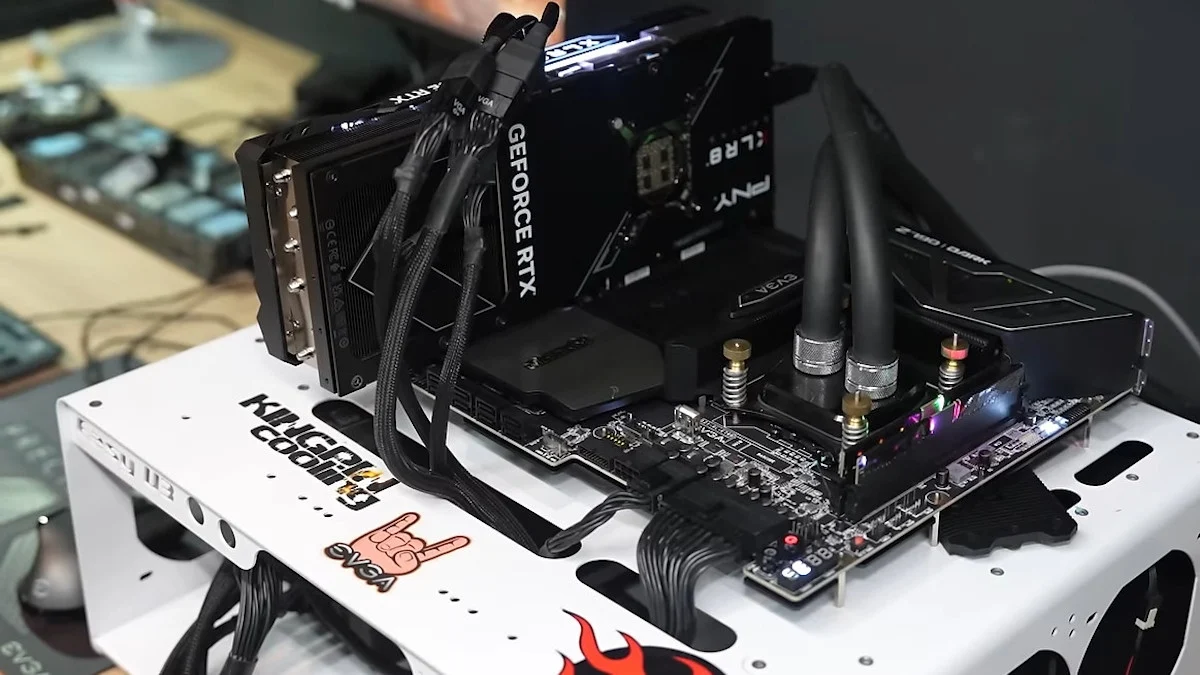In an exciting development for the PC hardware community, legendary overclocker Vince Lucido, better known as KINGPIN, has announced a groundbreaking partnership with PNY Technologies. This collaboration aims to develop next-generation graphics processing units (GPUs) designed specifically for extreme overclocking enthusiasts. The news was revealed during a recent interview with Gamers Nexus at Computex 2024, sparking enthusiasm and anticipation among tech aficionados.
KINGPIN, renowned for his extraordinary ability to push hardware beyond conventional limits, has long been a central figure in the high-end GPU segment. His previous work with EVGA, particularly on the elite KINGPIN series of GPUs, set new benchmarks for performance and overclocking potential. However, EVGA’s decision to exit the GPU business left a void in the market, and KINGPIN has been on the lookout for a new venture to continue his legacy.
The Search for the Perfect Partner
In his quest for a new collaborator, KINGPIN explored several notable companies. He engaged in discussions with industry giants such as GALAX and ASUS. However, he felt that these companies already had well-established in-house overclocking teams, leading to what he described as “too many cooks in the kitchen.” KINGPIN also approached MSI, but the company was not interested in focusing on extreme overclocking for their GPU lineup.
Ultimately, PNY emerged as the ideal partner. Unlike other major players, PNY has shown a keen interest in disrupting the high-end GPU market. KINGPIN highlighted PNY’s enthusiasm and openness to innovation as key factors in his decision. “There is a massive hole in the high-end GPU market,” he stated, expressing his confidence that the partnership with PNY will successfully fill this gap.
The Future of High-End GPUs
The collaboration between KINGPIN and PNY is poised to make waves with the introduction of next-generation GPU designs. These GPUs will be tailored for the upcoming NVIDIA GeForce RTX 50 series, which is highly anticipated by gamers and overclocking enthusiasts alike. KINGPIN’s expertise, combined with PNY’s resources and commitment, promises to deliver unparalleled performance and overclocking capabilities.
While specific details about the new GPU models remain under wraps, the community expects significant advancements in cooling technology, power delivery, and overall performance. KINGPIN’s previous work with EVGA showcased innovations such as advanced PCB designs, robust power delivery systems, and custom cooling solutions, all of which contributed to record-breaking overclocking feats. Enthusiasts are eager to see how these innovations will evolve under the PNY banner.
Community Reactions
The announcement has generated a buzz within the PC hardware community. Forums and social media platforms are abuzz with speculation and excitement about the potential of the KINGPIN-PNY collaboration. Many enthusiasts view this partnership as a much-needed boost to the high-end GPU market, which has seen less competition following EVGA’s exit.
“This is fantastic news for anyone who loves pushing their hardware to the limit,” commented one user on a popular tech forum. “KINGPIN’s work with EVGA was legendary, and I can’t wait to see what he and PNY come up with next.”
A New Era for Overclocking
As the industry looks ahead to the launch of the NVIDIA GeForce RTX 50 series, the KINGPIN-PNY partnership represents a new era for extreme overclocking. Both KINGPIN and PNY are poised to set new standards in GPU performance, much to the delight of overclockers and high-end PC builders worldwide.
For KINGPIN, this new chapter with PNY offers an opportunity to continue his legacy of innovation and performance. For PNY, it is a chance to cement its place as a leading player in the high-end GPU market. Together, they are set to redefine the boundaries of what is possible with GPU technology.
The PC hardware world eagerly awaits the fruits of this collaboration, with expectations high for the next wave of extreme overclocking GPUs. As KINGPIN and PNY gear up to push the limits once more, the future of high-performance computing looks brighter than ever.








